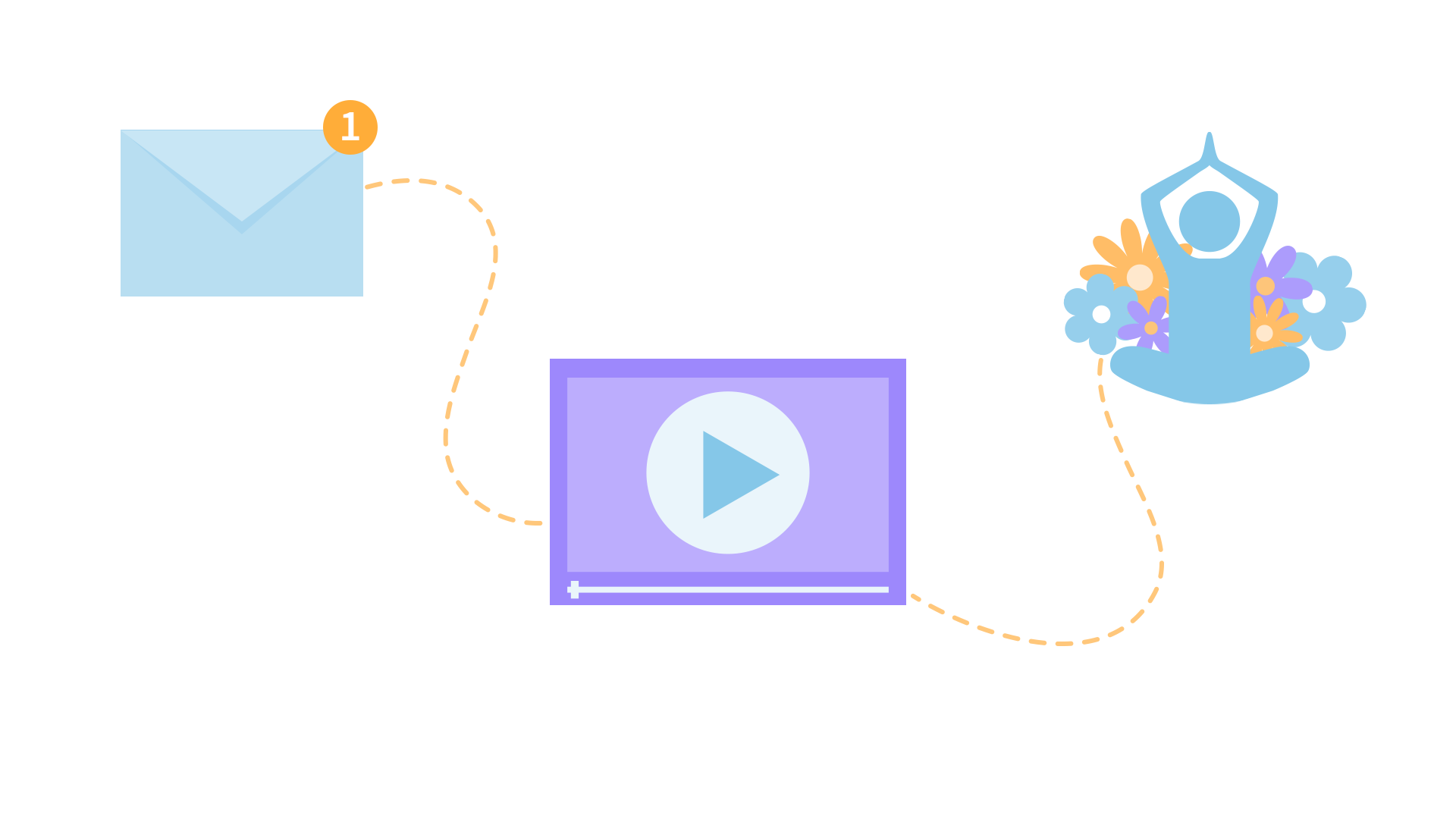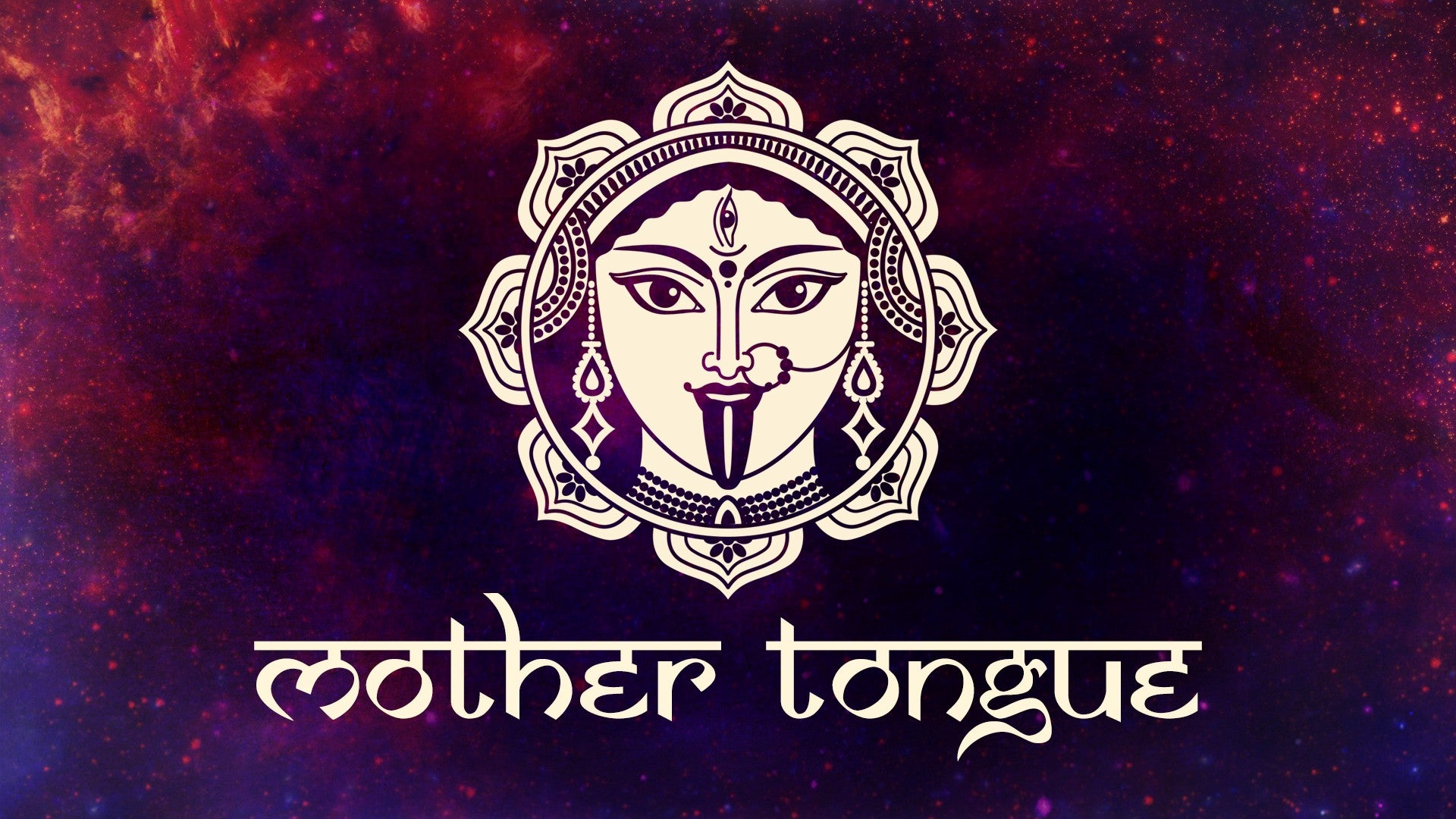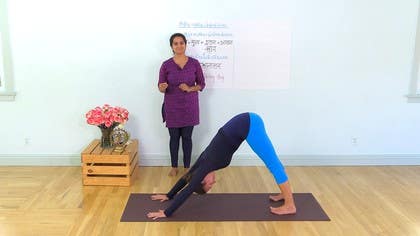Description
About This Video
Transcript
Read Full Transcript
Namaste, kushalam, kushalam in Sanskrit is to enquire whether you're well, whether you're keeping fine. So, kushalam and the answer is aam, kushalam, yes, all's well with the world. So thank you Julia for being here. Today we are going to look at another two asanas that you're familiar with. The first one is going to be the adho mukha shwana asana as normally pronounced but in Sanskrit it would sound more like adho mukha shwana sana, adho meaning downward, mukha is the face, shwana dog, asana pose, so it's the adho mukha shwana sana.
Let's see what it looks like, adho mukha shwana sana. This broken down is the adho mukha shwana asana as I've written, adho plus mukha plus shwana plus asana, we'll see what the devanagari of this word corresponds to, adho mukha mukha shwana plus asana, there we are, there are a few vowels that have been incorporated into this word that we can learn to see how they combine with the consonants. We have the vowel o which is the letter d or the consonant d plus the vowel o, you add this extra stick with the antenna, so adho, then we have the consonant m plus the vowel o which is the mu, you see it very distinctively in the English and then you have the mu becomes one letter together, that's the kha, this is the shh, the palatal shh combined with the v and the a, so there are three sounds put together in this combination here, so we have the shwana and then asana, sometimes this particular combination is also written in this manner, shwana, just pay attention to the first part, so you have this combination here and that can also be written like that, shwana, so we have the adho mukha shwana asana, in terms of pronunciation the shva which is the v, teeth on the lips, v sound, as a result of following the shh, I would tend to pronounce it as the w so I would say shwana asana, seems more natural but you would also hear it pronounced as the shwana asana, I think there is that much of flexibility, so we have the adho mukha shwana asana. Now we put it all together and we get adho mukha, sorry the accent is in that direction, shwana asana, in the Sanskrit that would look like adho mukha, let's do it like that as a combination difference, shwana asana, adho mukha shwana asana and you notice that when you write it that way you don't normally put the line right across it, so adho mukha shwana asana, you want to say that with me, adho mukha shwana asana. Now look at the Sanskrit letters and just make the same sound, try and connect with the letters accordingly, adho mukha shwana asana.
Now I'll just write it out for you, adho mukha shwana asana, that could be another way that you help yourself to combine the syllables together, in English the word is the downward facing dog, downward facing dog. So now that we've seen what it looks like and sounds like, let's see what it appears in terms of the posture, so Julia, so make it look like the downward facing dog, so it has to be on the fours and the face looking downwards, so adho mukha shwana asana, we'll say it fast, adho mukha shwana asana, try saying it, together the last time, adho mukha shwana asana, brilliant, so Julia, thank you. In the same series we thought of also looking at the next asana which has more or less the same words in it, but instead of looking down, it's the upward facing dog, so it's the urdhva mukha shwana asana, so in Sanskrit adha means down, urdhva means up, so let's see what it looks like, urdhva mukha shwana asana. We will break it up into the different sounds of that word like we have here, the only difference is the adho and urdhva, so now that you're familiar, it's a matter of more practice. We will write the Devanagari script of that, so the u, the vowel u is like the shot but with the extra tail, it's like the om but without the moon and the dot on top, so urdhva, we have the combination of a few consonants put together along with the vowel, so we have the consonant r plus the consonant dha, just be careful that you don't say dha which is the way we tend to pronounce it in the English speaking world, when the d appears without the dot below, it is the soft dental dha sound and you add the h, it becomes with the aspirate or with the breath, dha, say that, dha, so we have quite a combination coming up there, r, dha, v, and urdhva, in terms of writing also, it needs a little bit of concentration, so we have the u, we need to hold the half r, don't put it in immediately, so we have the half dha, you see here we had the full dha, when you combine that with another consonant, it drops the stick there and just gets attached to the next sound, so we have the sound of v, the consonant v, we attach that here, v, so we have urdhva at this stage, but we need to include the consonant r, and when you have a half r, it translates itself as a c, but at the end of that combination, so you have to hold it in the writing, so urdhva, urdhva, another feature of the dha is that the line doesn't go all the way across, that becomes another letter, so remember that it starts with a little round tip and then you have the dv, plus, m, u, k, plus, I'll do a variation, sh, v, a, n, plus, a, s, n, n, n, n, n, n, n, n.
Now, there you are, the, the again, the play of the Sanskrit words is that you can literally break it up break by brick, and then reconstructed brick by brick in terms of the sound as well as the letters, the visuals. So, urdhva, mukha, shwa, naa, shwa, na, asana, putting it all together, we get urdhva, mukha, So, Ur, Dwa, Mo, Ka, Shwa, Na, Sa, Na. There you go. And in the Devanagari script, it looks like this. Ur, you have to hold the R. So, Ur, Dwa, Mo, Ka, Shwa, Na. So, the A gets connected there. Shwa, Na, Sa, Na. There you are. Ur, Dwa, Mo, Ka, Shwa, Na, Sa, Na. Say that along with me. Ur, Dwa, Mo, Ka, Shwa, Na, Sa, Na. Look at it. Ur, Dwa, Mo, Ka, Shwa, Na, Sa, Na. Ur, Dwa, Mo, Ka, Shwa, Na, Sa, Na. Our last time here. Ur, Dwa, Mo, Ka, Shwa, Na, Sa, Na. Those are the little building blocks. So, Sanskrit I'm afraid doesn't allow any shortcuts. You've got to say it all. Everything that you see has to be said and everything that is said has to be written.
That in English is the upward facing dog. There. Julia, can I request you to please show that to us? So, it's the Ur, Dwa, Mo, Ka, Shwa, Na, Sa, Na. Ur, Dwa is the upward look or the head facing up. Shwa, Na, the four points of touch. So, Ur, Dwa, Mo, Ka, Sa, Na. Try saying that. Lovely. We say together Ur, Dwa, Mo, Ka, Shwa, Na, Sa, Na. And once really fast. Ur, Dwa, Mo, Ka, Shwa, Na, Sa, Na. Brilliant. Great. I think we'll do a great job this way. Just keep practicing as much as you can and it'll not be difficult. Thank you, Julia. That was beautiful. Thank you. Dhanya Vaa, Dha. Sanskrit that means thank you very much. Dhanya Vaa, Dha.







You need to be a subscriber to post a comment.
Please Log In or Create an Account to start your free trial.